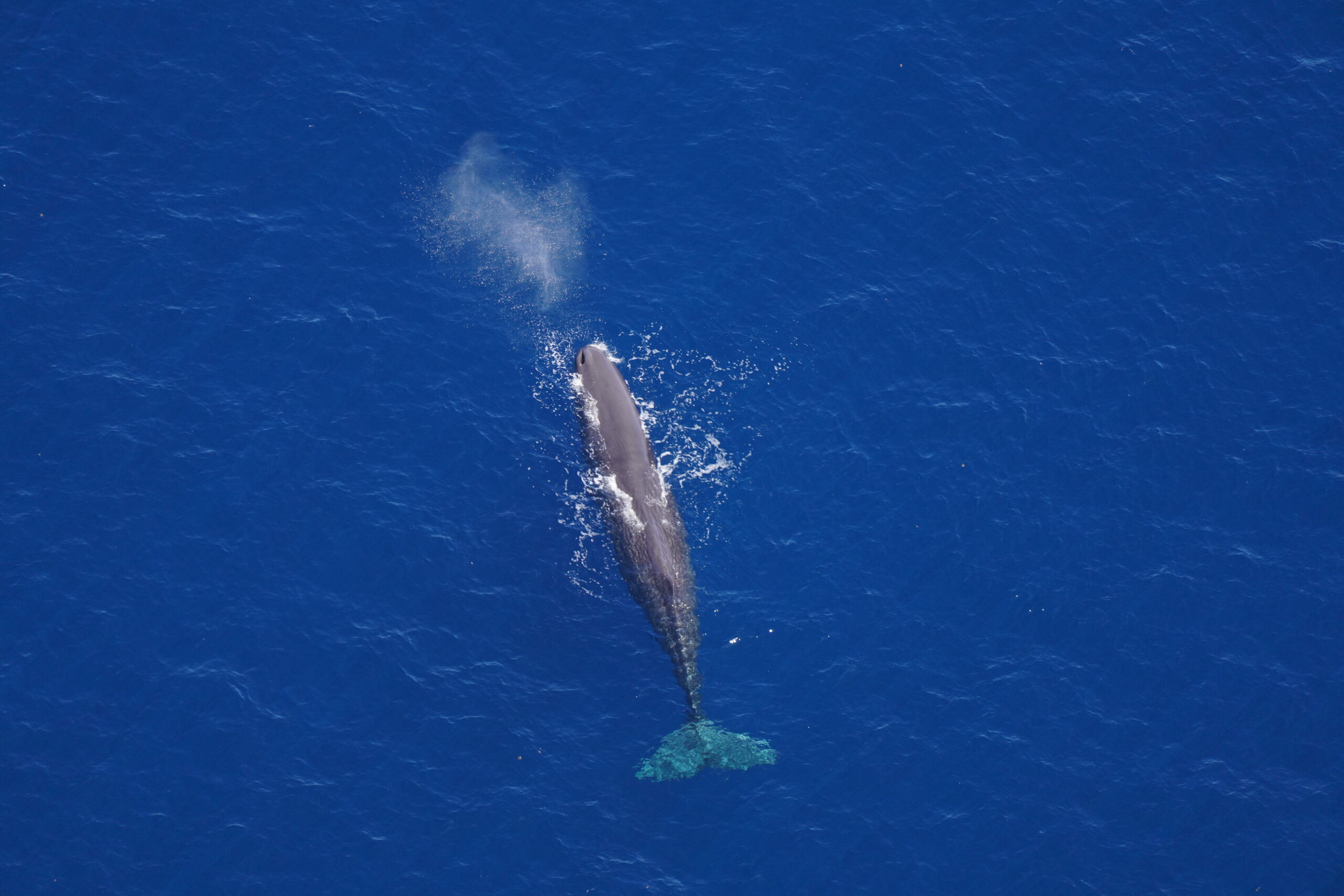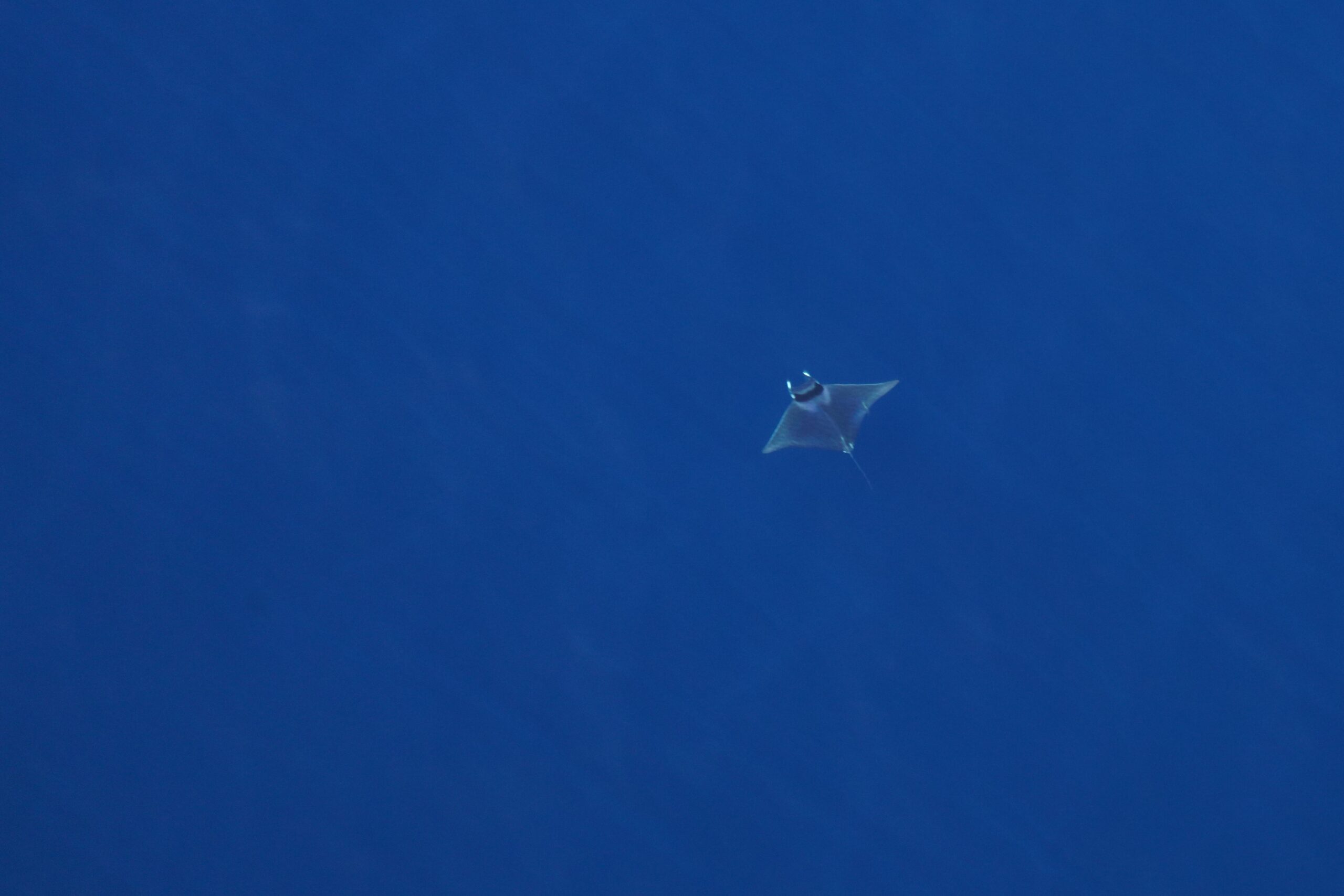
BOSTON, MASS. (August 6, 2025) – It was a clear day when the aerial survey team from the New England Aquarium’s Anderson Cabot Center for Ocean Life took off from New Bedford Airport. Their destination was the only U.S. marine monument in the Atlantic Ocean, Northeast Canyons and Seamounts Marine National Monument, about 130 miles offshore. They soon spotted more than 1,000 marine animals including an endangered fin whale and its calf, an endangered sperm whale, pilot whales, and a rich variety of other whales, dolphins, and rays.
*LINK TO HIGH-RES IMAGES OF SPECIES SPOTTED IN AERIAL SURVEY – Please credit New England Aquarium*
In total on July 24, the team sighted seven endangered fin whales, one endangered sperm whale, one humpback whale, two minke whales, 781 common dolphins, 108 Risso’s dolphins, 55 pilot whales, 30 bottlenose dolphins, 20 striped dolphins, and 22 devil rays.
“Seeing an endangered fin whale and its calf is a rare occurrence,” said Kate Laemmle, Assistant Research Scientist who was aboard the plane during the survey. “Each survey speaks to the remarkable array of biodiversity that we see in the Monument. It’s a perspective that we as research scientists are so fortunate to see, and it reinforces why it is so essential to the health of our ocean and planet to protect these unique habitats and the endangered species that depend on them.”
Created nearly 10 years ago in 2016, the 5,000-square-mile Monument is located 130 miles southeast of Cape Cod, a protected habitat with four underwater seamounts, or underwater mountains, and three deep-sea canyons, where a vast array of species feed. The steep slopes of the canyons create upwelling, a process that leads to an ecologically productive area. As a result, the Monument is a hotspot of biodiversity on the edge of the continental shelf where the shallow seas off New England drop sharply into the deep waters of the northwestern Atlantic.

In 2022, after observing the high number of marine animals, Anderson Cabot Center researchers published a study in Conservation Science and Practice using more than 180,000 sightings from U.S. East Coast waters to show that the Monument protects a diverse and unique marine mammal community.
During survey flights, Anderson Cabot Center scientists have observed the world’s largest animal on earth—the blue whale—and other endangered whale species, including fin and sperm whales. The Aquarium scientists have also seen elusive True’s beaked whales, which spend little time at the surface and dive deeply in the marine canyons. Throughout the year, the aerial team documents species from Maine to the Southern New England Shelf as well as the Monument.
“A healthy ocean relies on flourishing marine animals and habitats, and areas like the Northeast Canyons and Seamounts Marine National Monument protect marine ecosystems, helping ensure a vital and vibrant ocean for future generations—both for the environment and the blue economy,” said New England Aquarium President and CEO Vikki N. Spruill.

MEDIA CONTACT: Pam Bechtold Snyder—617-686-5068; psnyder@neaq.org
